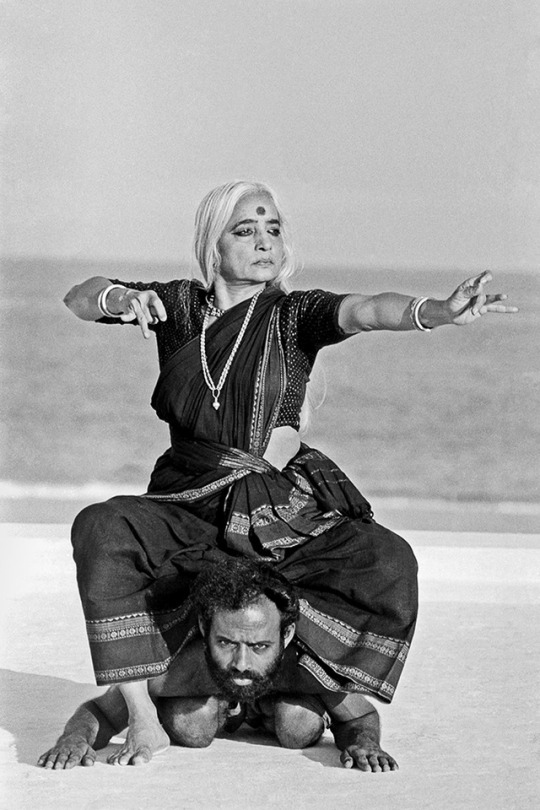#wonder why the shorter dance saris never became mainstream
Photo

However, the recalling of this image of female power without any direct reference to the goddess figures is significant: the strong traditions of goddess worship in contemporary India coexist with patriarchal systems that attempt to restrict, in particular, their sexual and sensual powers, besides other aspects. In the naravahana image onstage, on the other hand, conceptions of the goddess resonate but are not directly represented. In Chandralekha' s choreography this goddess-like woman, as she sits atop her human carrier, uses hand gestures to symbolize the weapons she wields tigernails that rip apart, a spear, a bow and arrow, a sword. She also wields objects more related to cultivation than sophisticated warfare, a scythe and a chopper. All of this links her to agricultural traditions and fertility cults as well as to martial traditions, in which she reclaims her active participation and her central role. [Butting Out: Reading Resistive Choreographies Through Works by Jawole Willa Jo Zollar and Chandralekha, Ananya Chatterjea]
Chandralekha* in the Naravahana** sequence from her path-breaking production Angika Madara, 1985. Photo credit: Sadanand Menon
*along with Nandakumar.
**naravahana: nara=man, vahana=a deity’s carrier/mount
#1980s dance#dance drama#chandralekha#angika#indian dance#bharata natyam#1980s india#the sari seems like a kalashetra sort#wonder why the shorter dance saris never became mainstream#indian women#indian goddess
207 notes
·
View notes